thesis gucci hermes luxury brand
The Architecture of the Luxury Experience
Background
Background ___________________________________
Customers’ shopping behaviors often evolve more rapidly than luxury brands can adapt. When brands lag in responding to these changes, customers may lose the emotional connection and sense of identity they once had with the brand. To maintain relevance in the luxury market and compete with the convenience of online shopping, luxury brands must amplify their surprise elements, delivering impactful and holistic experiences that resonate deeply with their customers.
The challenge for luxury brands like Gucci and Hermès lies in navigating the extremes: neutral tones versus bold collections. Both brands, once known for their distinct and recognizable identities, faced difficulties when adopting contrasting styles—minimalist and streetwear—that trended from 2019 to 2021. For Gucci, the embrace of street style risked oversaturation, necessitating a shift in core values that left their audience uncertain of the brand’s true essence. Similarly, Hermès, by blending in with other monochromatic and minimalist luxury brands, began to lose the exceptional sophistication that once made its offerings akin to museum art.
Issue
Issue _____________________________________
Luxury brands normally create concept stores to not risk their main flagship store’s identity; however, the model in this thesis offers luxury brands an opportunity to enhance their experience by implementing new and flexible surprise elements to better attend all kinds of customers intentions, creating hedonic motivations for customers to buy more, and to increase their loyalty towards the brand. Especially in New York City where tourists come from all over the world, brands implement innovative and creative experiences to compete for customers’ attention.
The central challenge for these brands is to elevate their cultural relevance while staying true to their core identity and values.


research identity luxury brand
Solution
Solution ___________________________________
My research has produced a framework for how luxury brands can enhance their identity through their brick-and-mortar stores, thereby enriching customer experiences. These physical spaces serve as the primary medium for communicating brand messages and increasing brand equity. If a brand’s identity is to be elevated, this must be reflected in the in-store experience, reinforcing brand association.
To achieve this, brands should implement the method developed by Hannah Korn, which emphasizes engaging the human senses, catering to shopping motives, and introducing customizable services as a ‘point of surprise.’ This approach ensures that the luxury experience is not only preserved but also elevated, making the brand stand out in an increasingly competitive market.
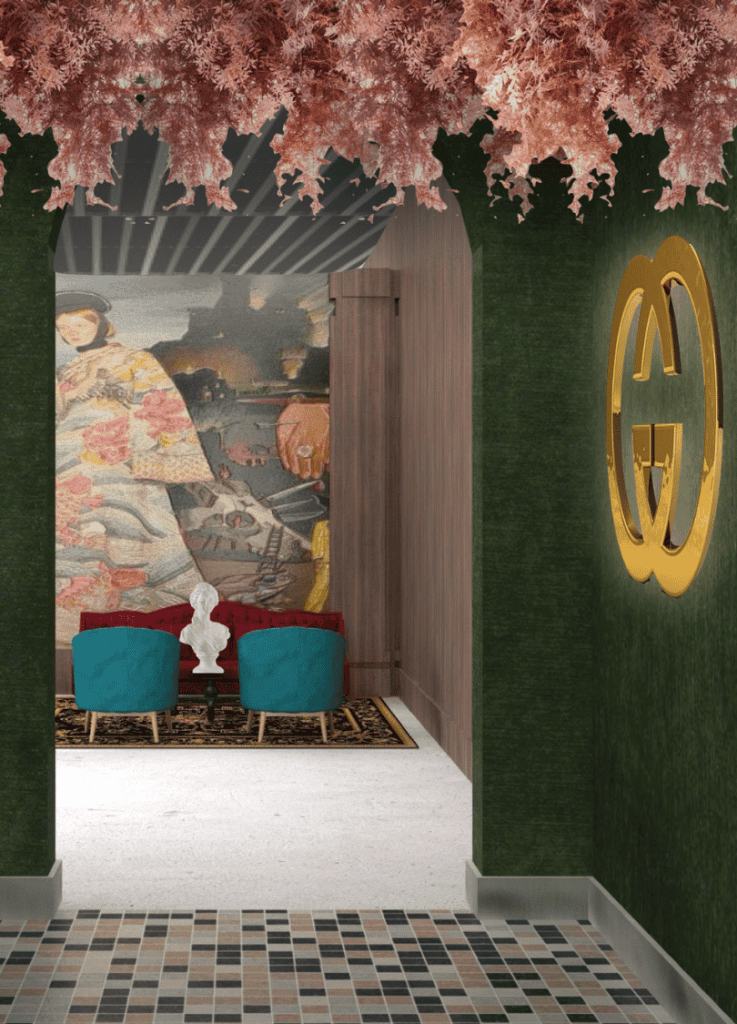
The Proposal
The Proposal ___________________________________
The new proposal store counts with merchandising that associates with art through its museum-style, as well as its garden details. Gucci’s wallpaper, since it’s well-known it is centered on the wall of the fitting room. The fitting rooms are also a space to bring the Gucci house decor product and showcase them in a way customers can feel like they’re home and feel the Gucci lifestyle.
The fitting rooms are also connected to the Gucci app where customers can change lights, music, ask for employee’s assistance, and more. All the fitting rooms are connected to a door that only the manager has which can give customers a bigger space for them to try clothes together with their friends or family.
The experience within the fitting rooms is going to address the customers who are there for all kinds of reasons, including the task intention since the app facilitates customers’ lives who prefer practical results.
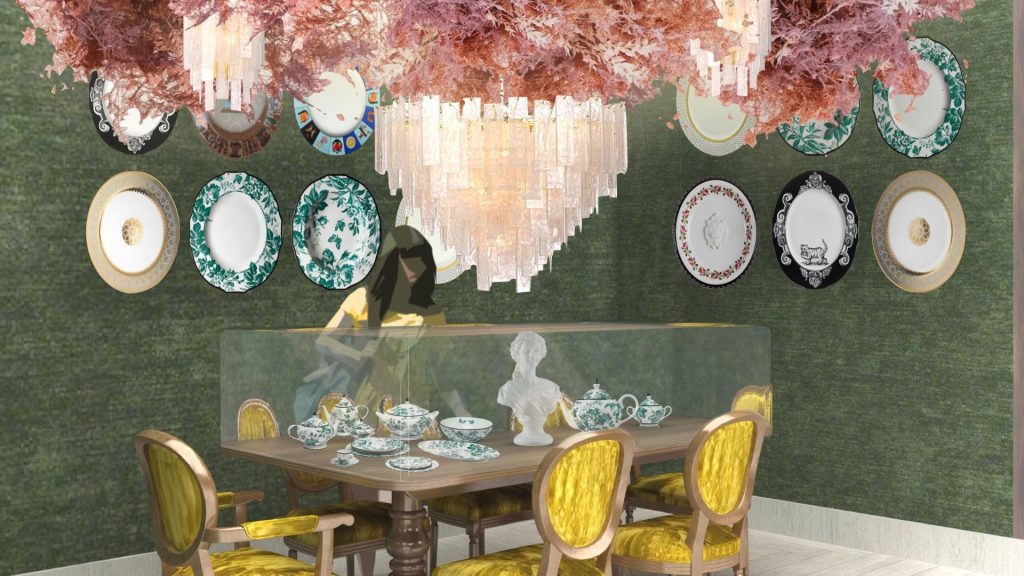
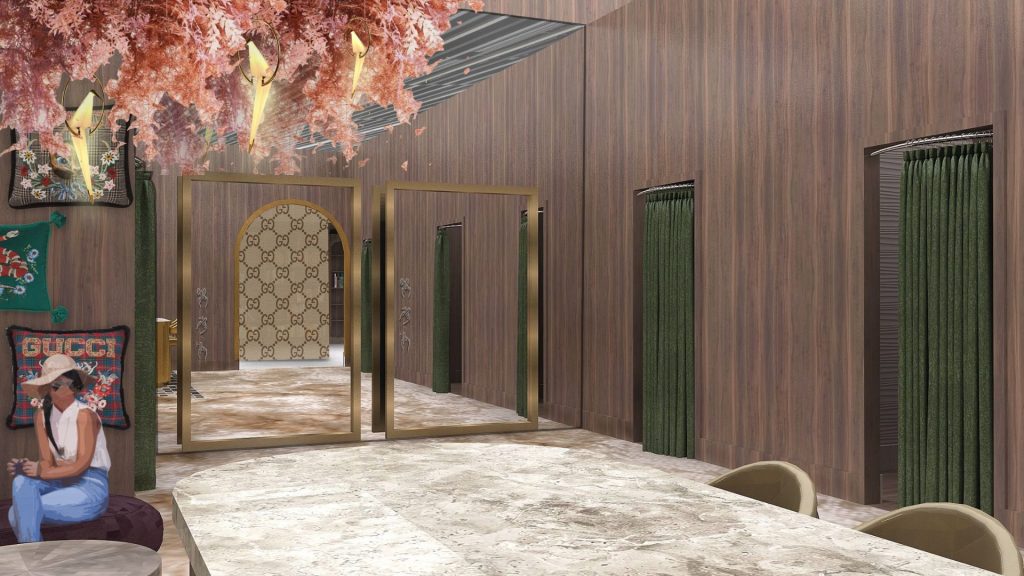

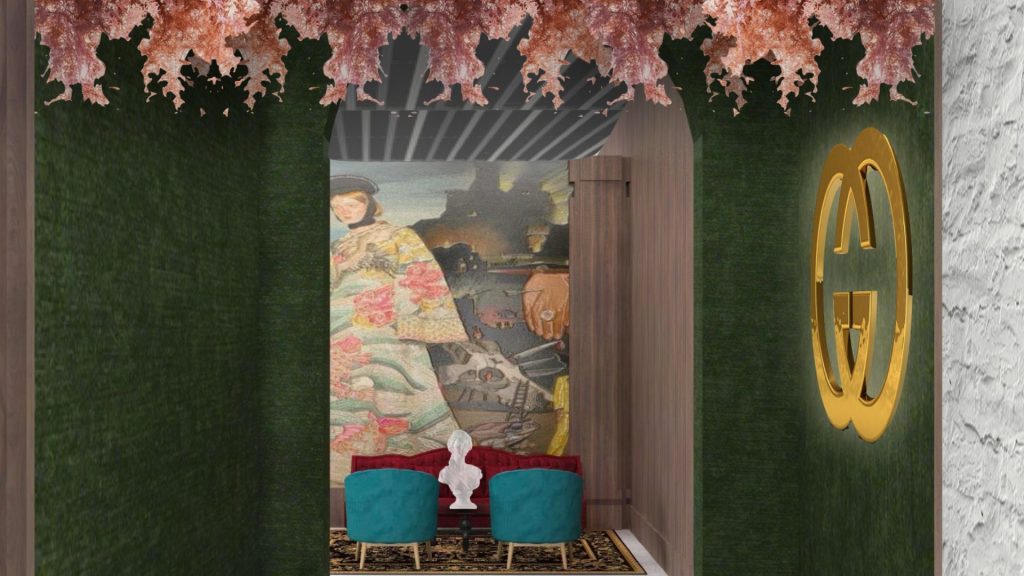
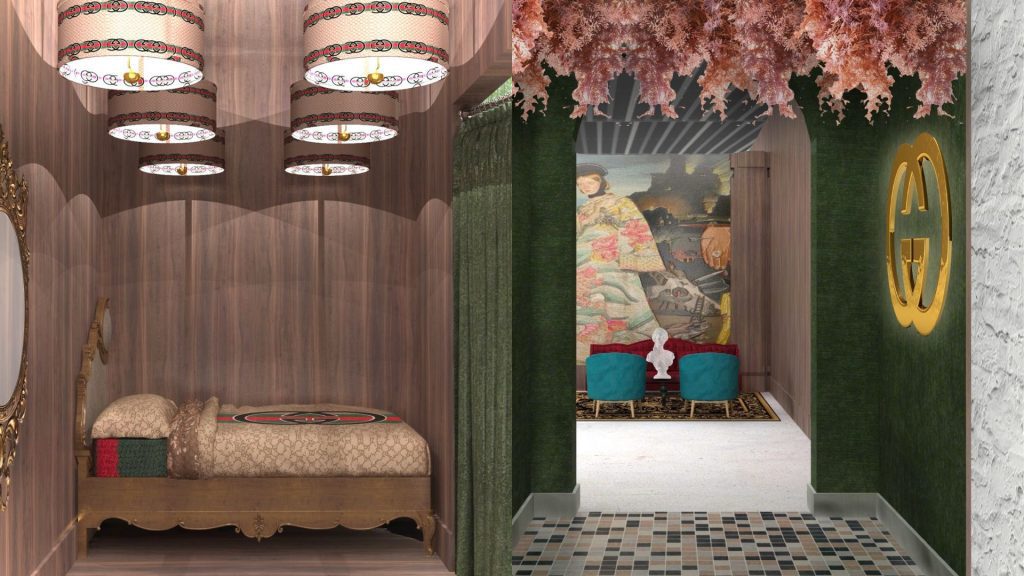
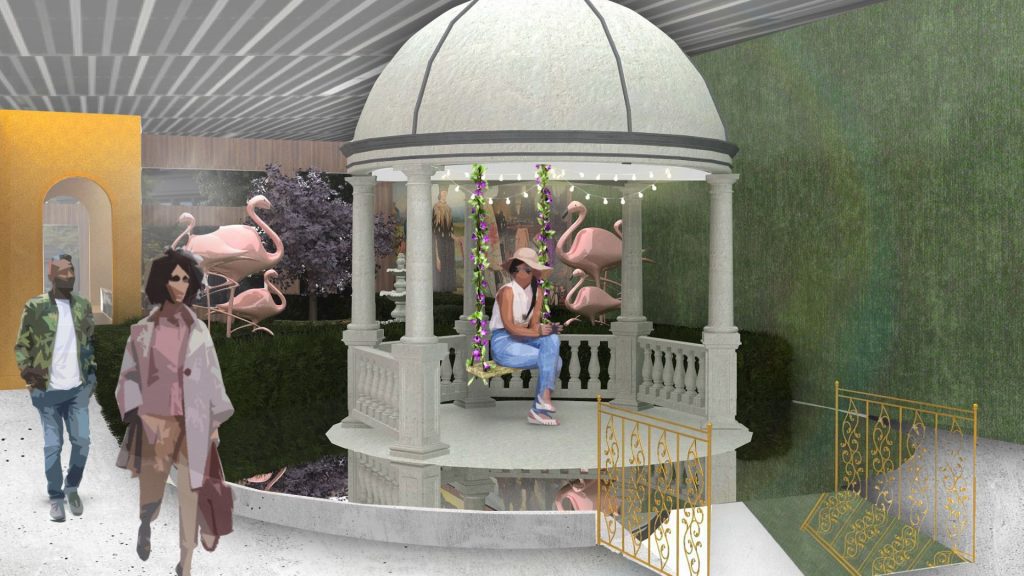
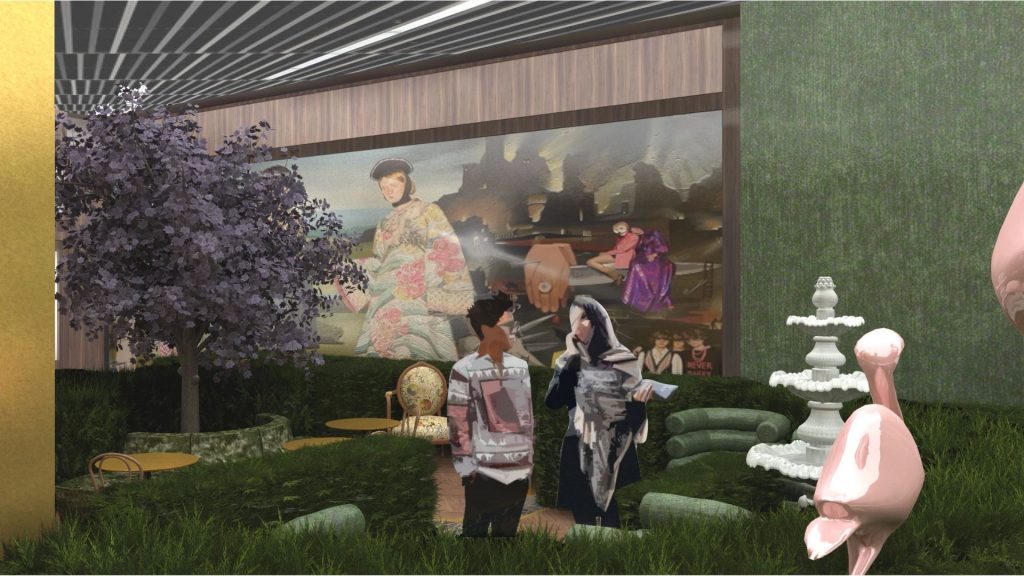
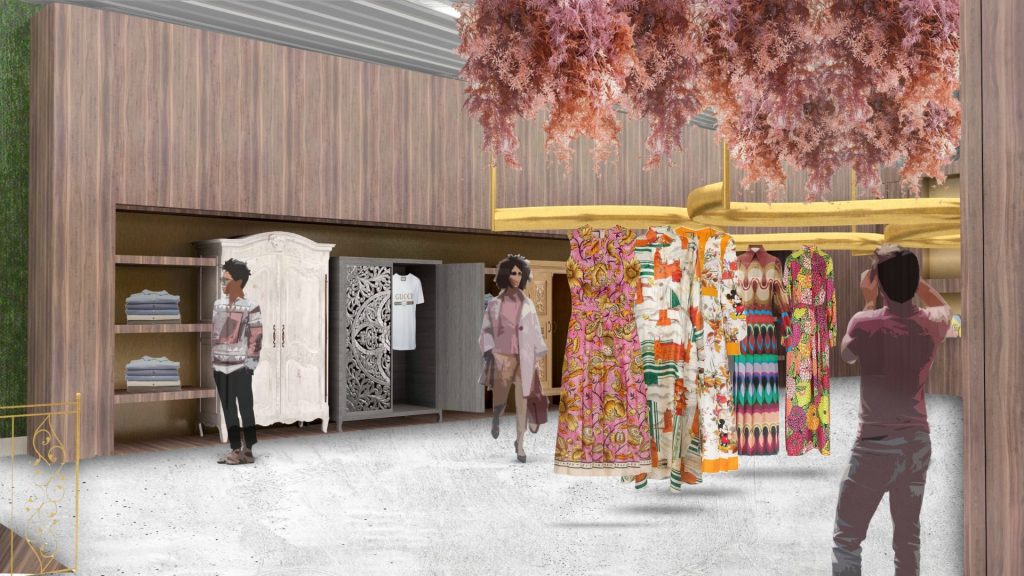
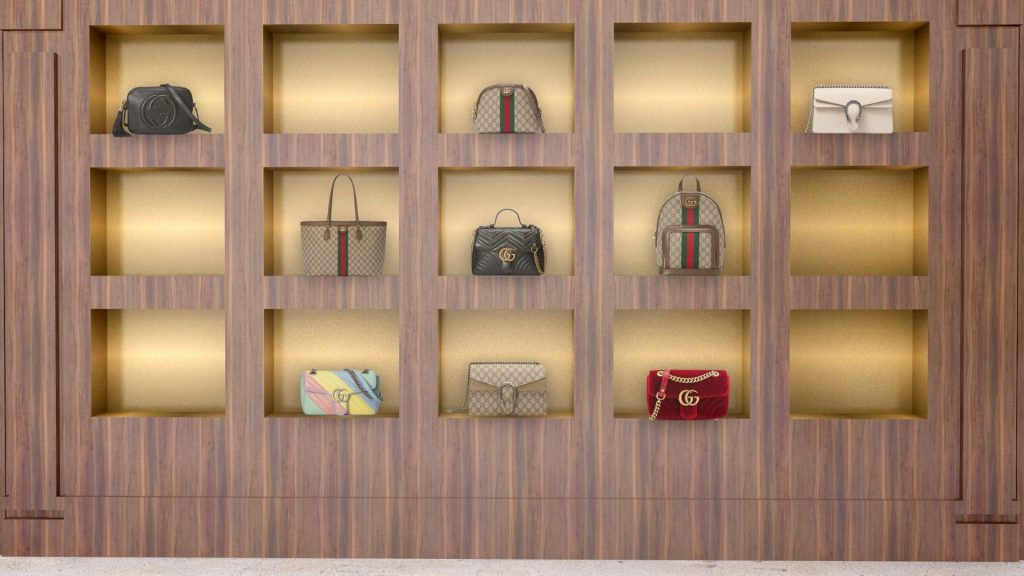
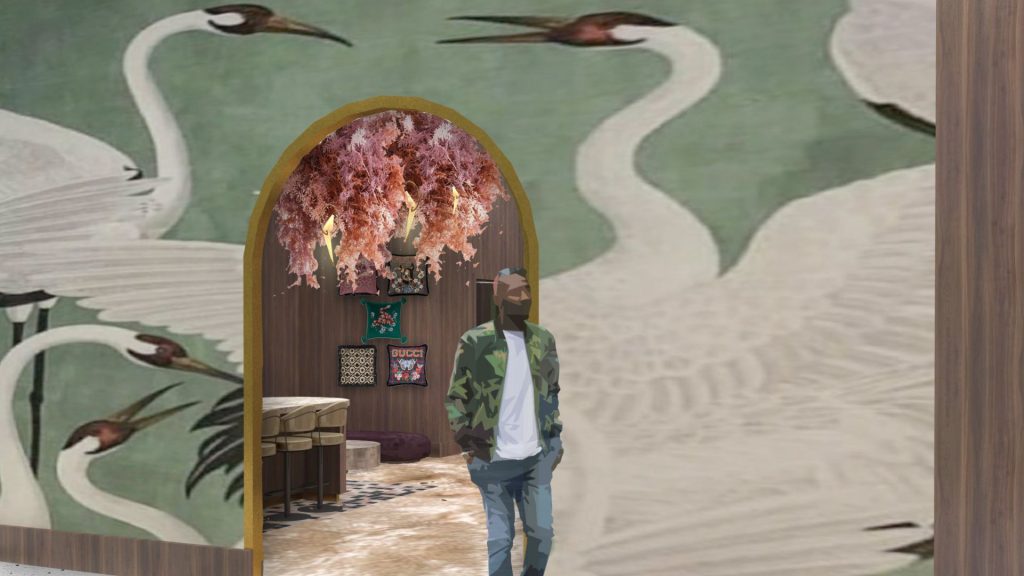

The Proposal
The Proposal ___________________________________
The goal of the new store, in terms of interior design, is to follow the brand identity showcased in other stores around the world and their brand strategy.
The VIP lounges are designated for both floors, male and female. Since the store integrated two of the stores, it is important to have two different types of lounges to better address customers’ needs and for them to identify themselves within the space. Space has a bar, with alcoholic beverage tasting, tea, coffee, and snacks. It is also space for employees to give exclusive attention to the customer, as well as presenting to them similar products around the lounge that goes together with what they would like to purchase, to influence their purchase decision.
All the decorations in the store resemble a horse or the vintage elite, to increase the brand association between the brand and their heritage. The last floor is dedicated to a bar next to the art gallery and the terrace where it can be shown art, events, and more spaces for customers to experience.
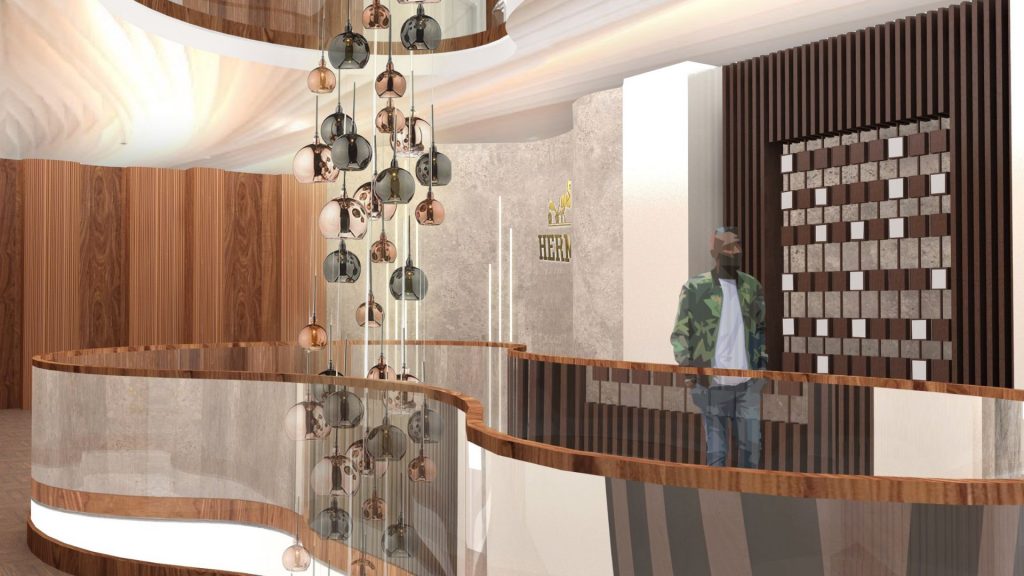

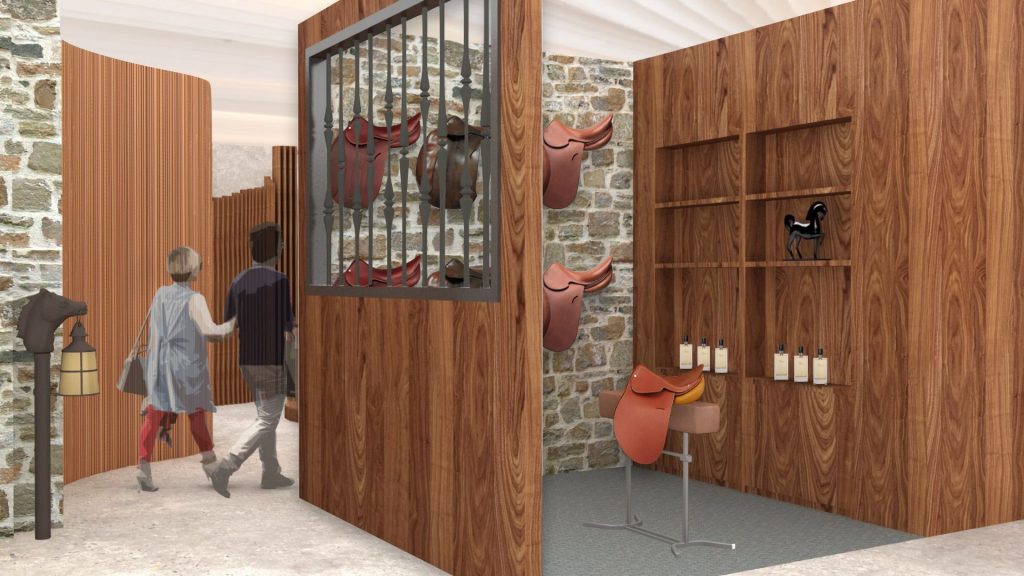
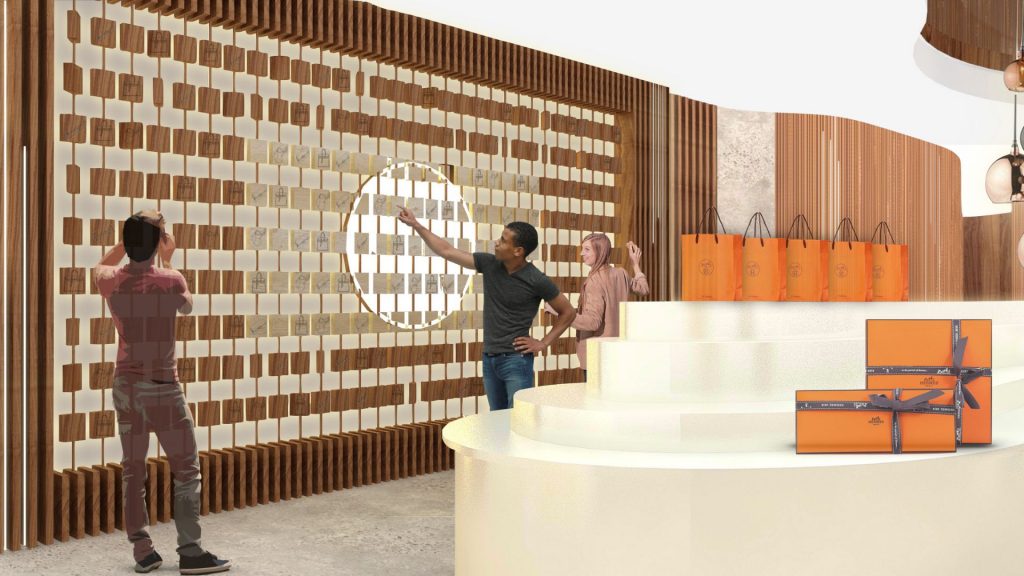

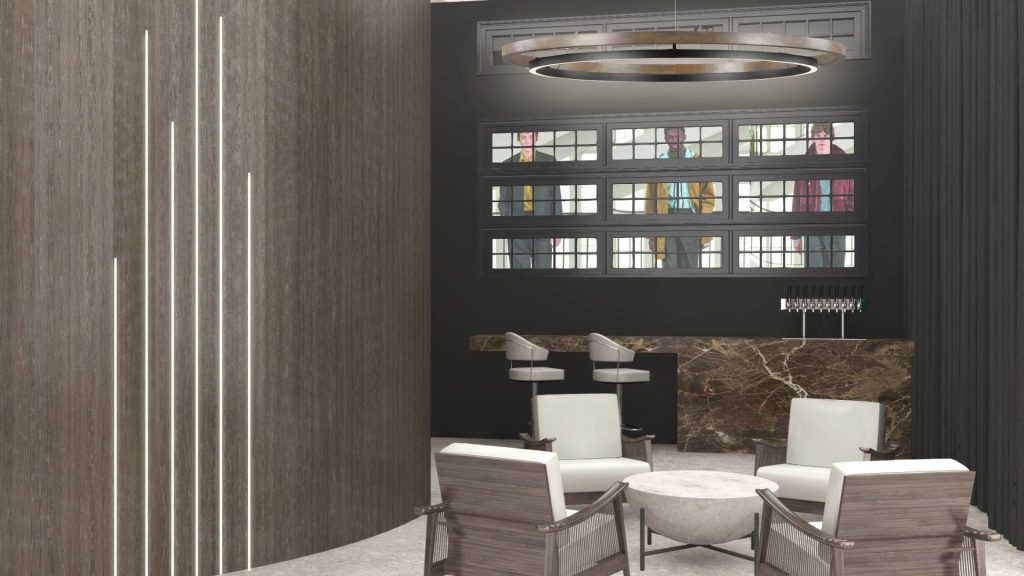

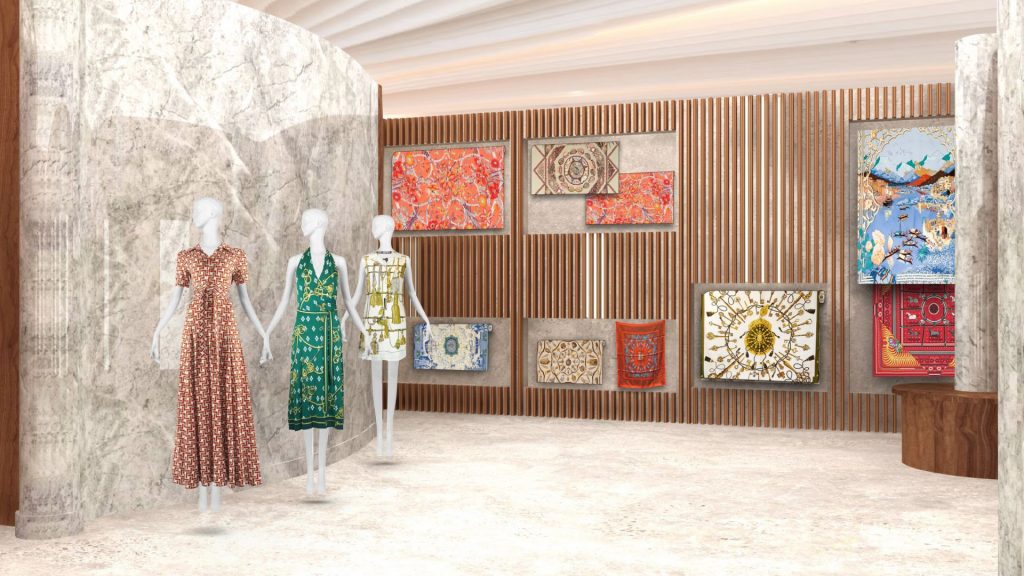
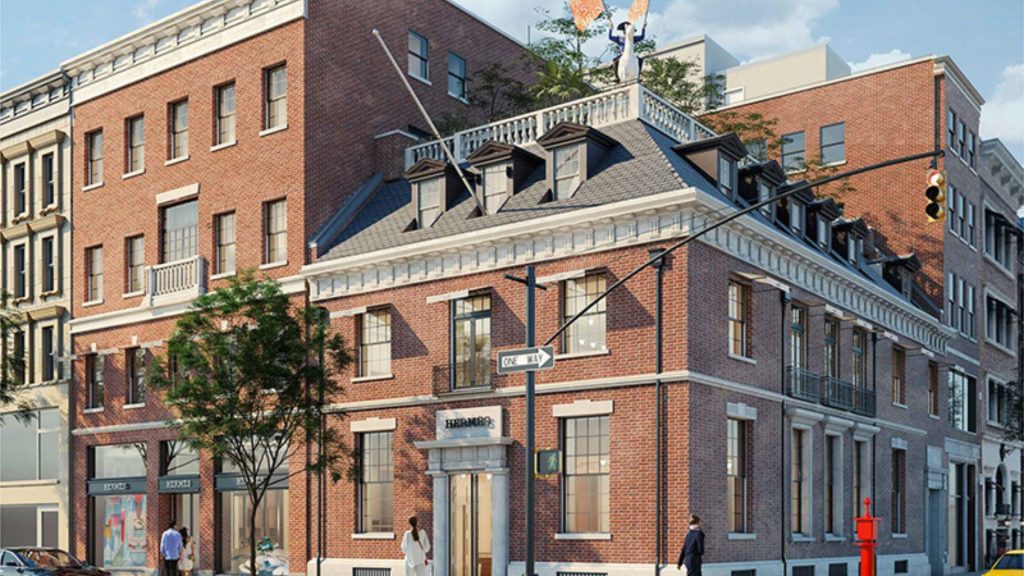
Conclusion
Conclusion ___________________________________
The goal of this thesis was to bring a way for luxury brands to enhance their experience through the environment to better engage with customers and influence their purchase behaviors. Through the creation of the model and case study implementations, it was proven that this can be realized without risking luxury brand’s identity but helping them to implement their identity through their surprise elements. That ensure the luxury brand can better engage with their customer to emotionally connect with them, as well as to encourage their purchase behavior.



